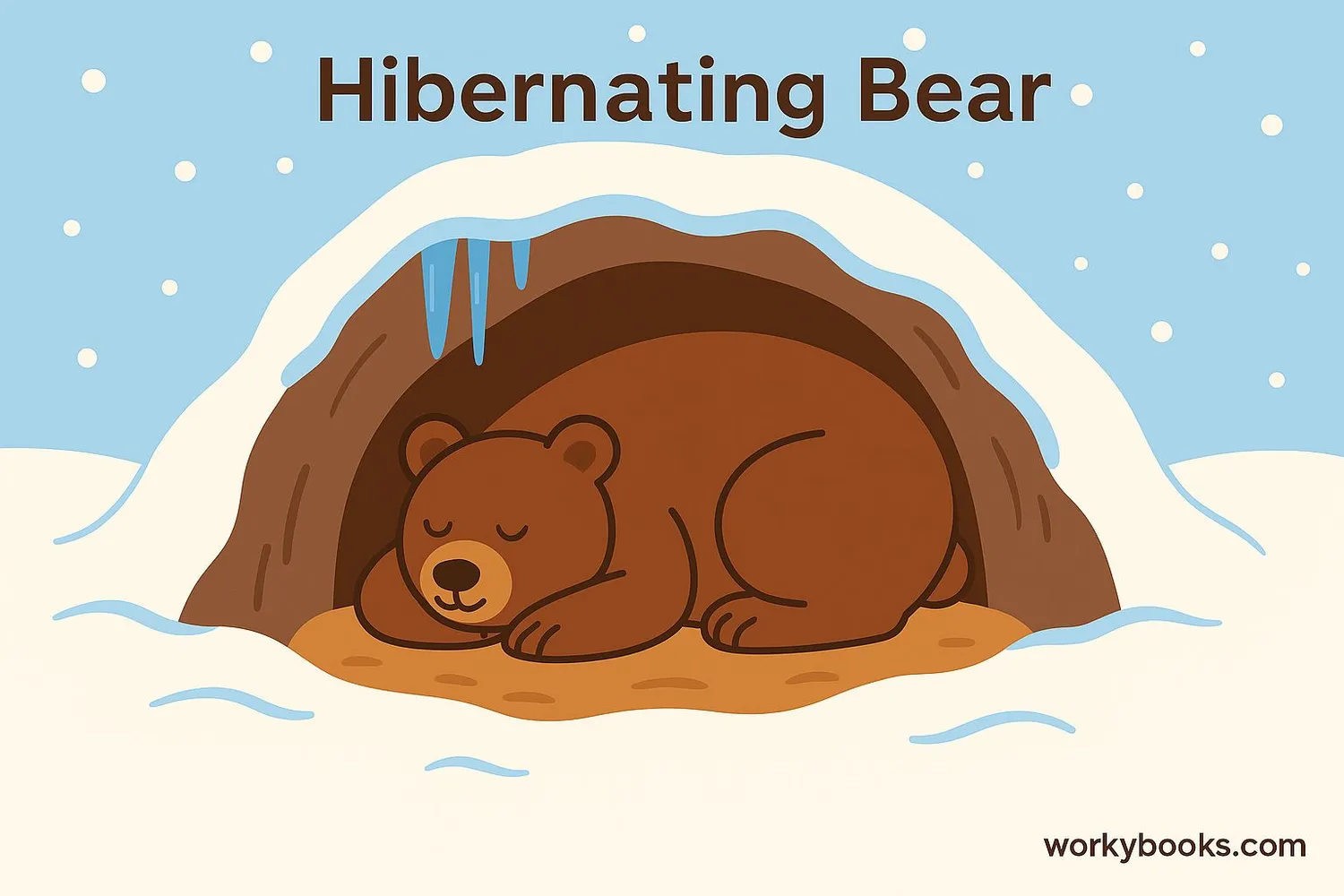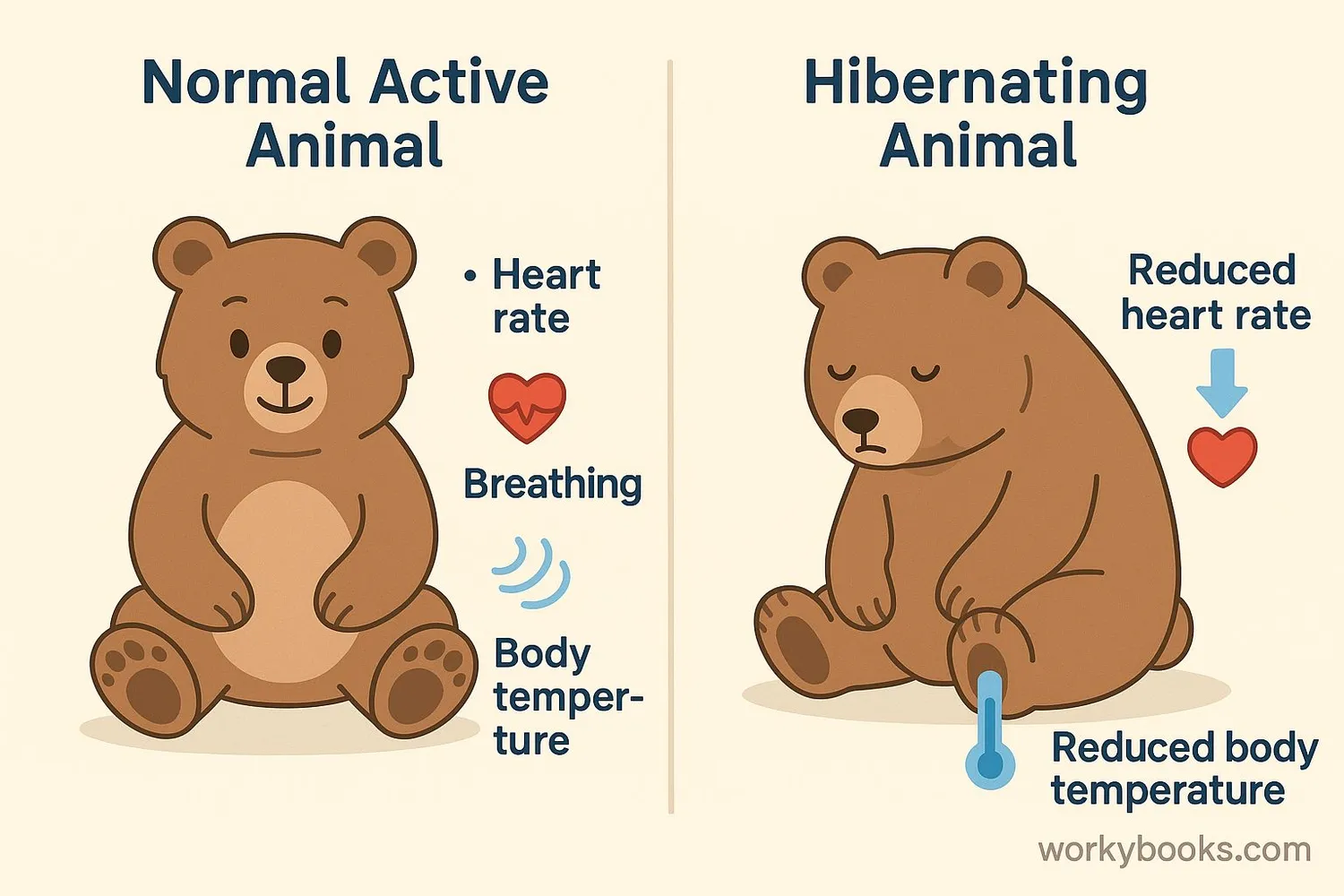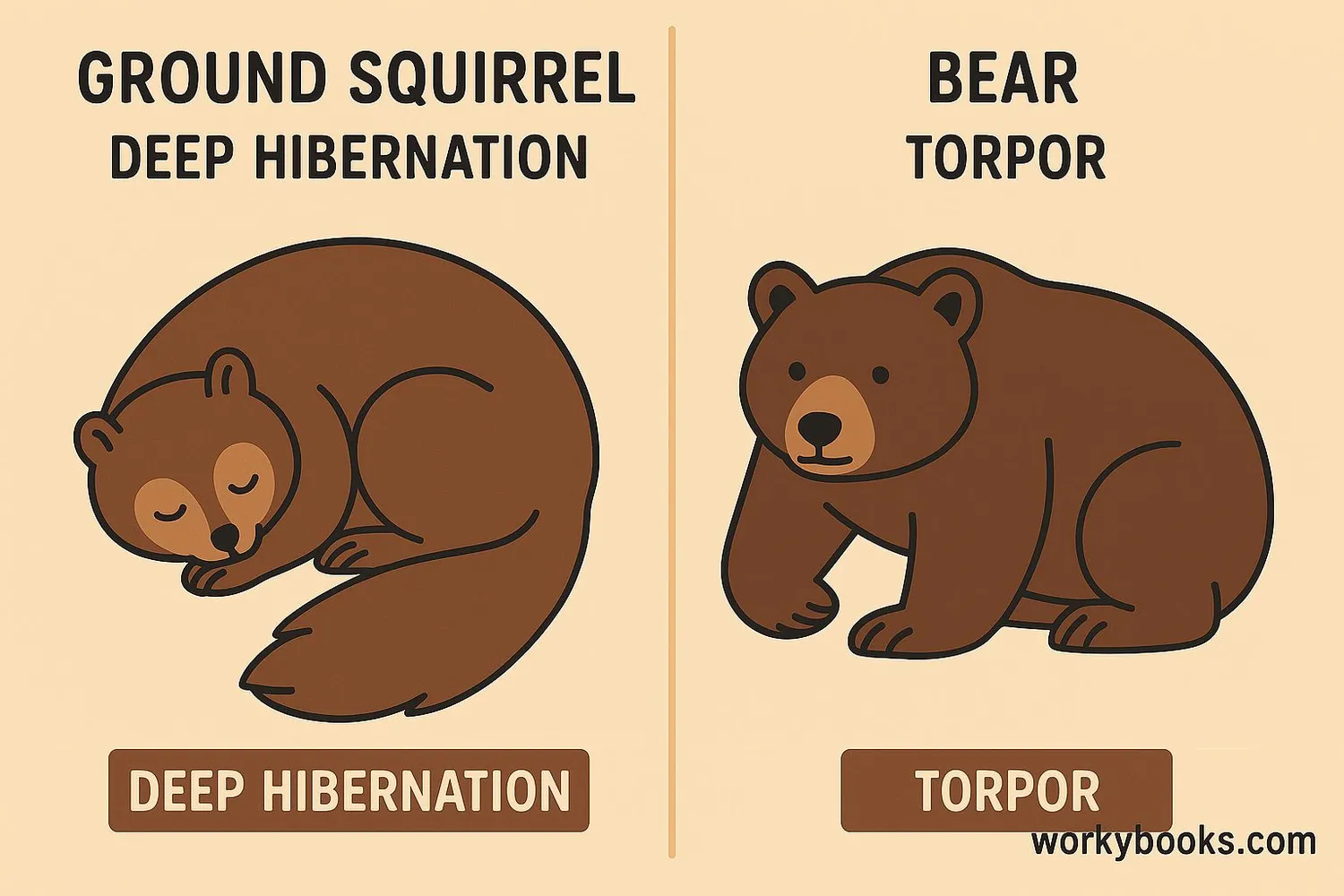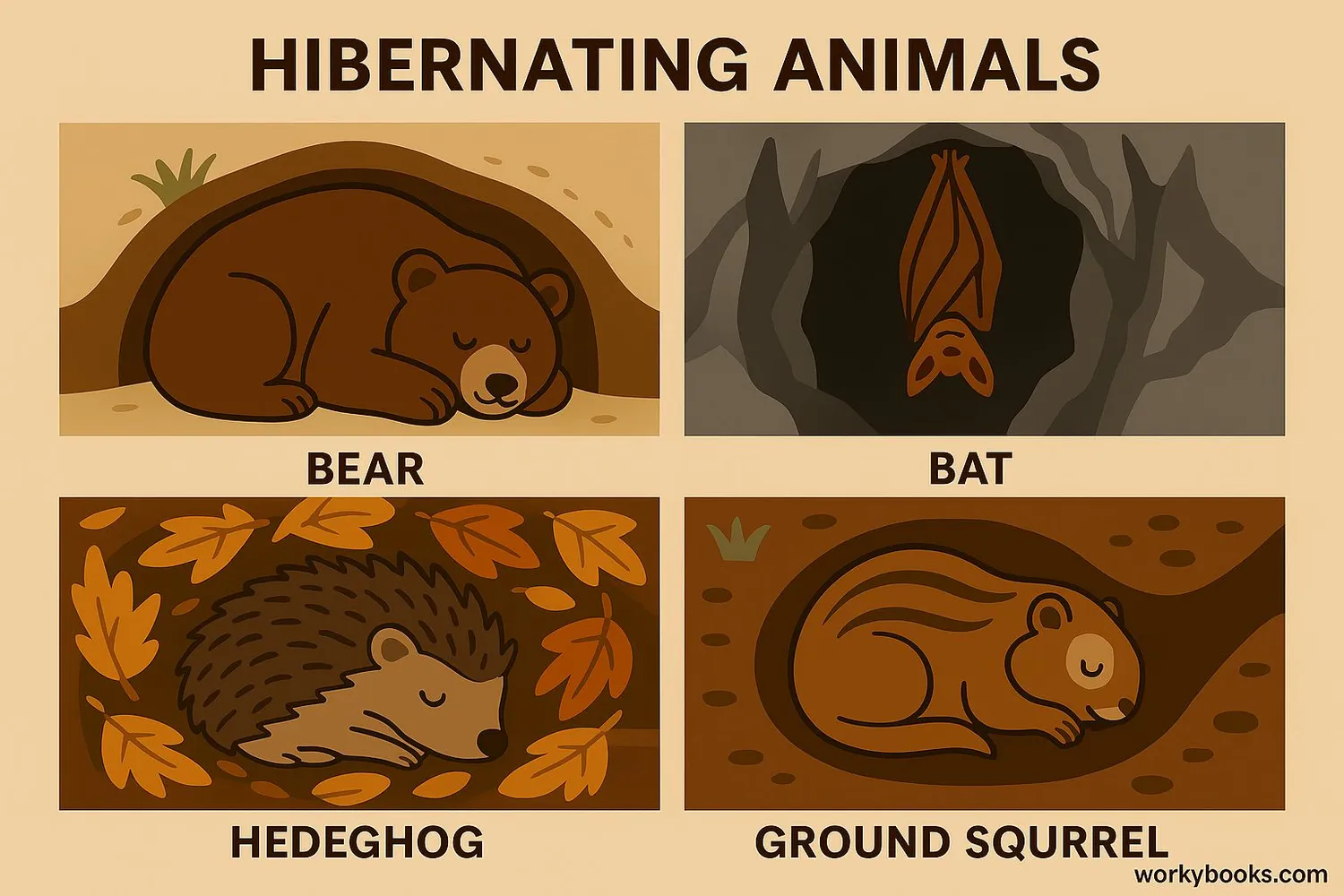Hibernation - Definition, Examples, Quiz, FAQ, Trivia
Discover how animals survive winter by slowing down their bodies
What is Hibernation?

Hibernation is a special state that some animals enter to survive cold winters when food is scarce. During hibernation, animals slow down their bodies to save energy. Their heart rate, breathing, and body temperature all decrease dramatically.
Think of hibernation as a very deep sleep where animals can go weeks or months without eating! This amazing adaptation helps animals conserve energy when temperatures drop and food becomes hard to find. Animals prepare for hibernation by eating extra food in the fall to build up fat reserves.
Science Fact!
Hibernation is different from regular sleep - hibernating animals can reduce their heart rate to just 2-3 beats per minute!
How Hibernation Works

When animals hibernate, their bodies undergo amazing changes to conserve energy. Here's what happens during hibernation:
Preparation
Animals eat extra food to build fat reserves
Finding Shelter
Animals find or create safe dens for winter
Slowing Down
Heart rate, breathing, and metabolism slow
Temperature Drop
Body temperature decreases significantly
Energy Conservation
Body lives off stored fat reserves
During hibernation, an animal's body temperature can drop to just a few degrees above freezing. Their heart rate might slow from 200 beats per minute to just 5-10 beats. Some animals even wake up periodically during hibernation to urinate or adjust position before going back into hibernation.
Amazing Adaptation!
The Arctic ground squirrel can lower its body temperature below freezing during hibernation - the only mammal known to do this!
Types of Hibernation

Not all hibernation is the same! Scientists recognize different types of winter survival strategies:
True Hibernation
Animals enter a deep, prolonged state of reduced metabolism. They are difficult to wake and may appear dead. Examples: ground squirrels, bats, hedgehogs.
Torpor
A lighter form of hibernation where animals can wake more easily. Body functions slow down but not as dramatically. Examples: bears, raccoons, skunks.
| Feature | True Hibernation | Torpor |
|---|---|---|
| Depth of sleep | Very deep, difficult to wake | Lighter, can wake periodically |
| Body temperature | Drops close to freezing | Drops moderately |
| Heart rate reduction | 95% or more | 50-75% |
| Duration | Several months continuously | Days to weeks at a time |
| Examples | Ground squirrels, bats | Bears, raccoons |
Bears are special because they experience a form of hibernation called "winter lethargy" or torpor. While they sleep for months, they don't experience the extreme metabolic drop of true hibernators. Female bears even give birth during this period!
Animals That Hibernate

Many different animals hibernate to survive winter. Here are some fascinating examples:
Bears
Experience torpor rather than true hibernation. Sleep for 5-7 months without eating, drinking, or eliminating waste.
Ground Squirrels
True hibernators that can lower body temperature below freezing. Hibernate for up to 8 months.
Bats
Hibernate in caves where temperature stays constant. Cluster together to conserve heat.
Hedgehogs
Build nests of leaves and grass. True hibernators that may wake briefly during warm spells.
Wood Frogs
Freeze solid during winter! Special chemicals prevent ice damage to cells.
Common Poorwill
The only bird known to hibernate. Found in western North America.
Bear Fact!
Female black bears give birth during hibernation! The tiny cubs nurse while mom sleeps until spring.
Hibernation Quiz
Test your hibernation knowledge with this quiz! Answer all 5 questions to see how much you've learned.
Frequently Asked Questions
Here are answers to some common questions about hibernation:
Amazing Hibernation Facts
Discover some incredible trivia about animal hibernation:
Frozen Solid!
The wood frog can survive being frozen during hibernation! Special chemicals in its blood prevent ice crystals from damaging its cells.
Longest Hibernator
Some ground squirrels hibernate for up to 9 months each year - that's three-quarters of their life spent in hibernation!
Slowest Heartbeat
The European hedgehog's heart rate drops from 190 beats per minute to just 20 during hibernation - and it takes only one breath every 2-3 minutes!
Space Hibernation
Scientists are studying hibernation to help astronauts survive long space journeys. Inducing torpor could conserve resources on missions to Mars!


